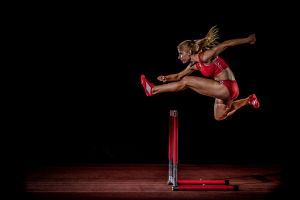
Introduction
Elite athletes chase every edge they can find. In 2025, data drives that edge. Performance metrics once limited to a stopwatch or a coach’s eye are now captured in real time. Wearable sensors, AI analytics, and 5G connectivity turn training grounds and stadiums into smart labs. Coaches and sports scientists use this data to train harder, avoid injury, and boost recovery. Fans even see live biometrics on their screens. This guide will explain what performance data is, why it matters, top trends in 2025, key technologies, and tips to harness data in sports. Let’s unlock the game-changing world of elite athlete performance data.
What is Performance Data?

Performance data means information about how an athlete moves and reacts. This data comes from devices and software that record speed, power, heart rate, and more. By collecting this data over time, we see patterns and progress. We can tweak training, reduce injuries, and plan game tactics.
Sources of Performance Data
Athlete performance data comes from many sources. Wearables like smart watches and chest straps track heart rate, steps, and sleep. GPS units record distance and pace on fields and roads. In-shoe sensors measure ground force and balance. Cameras with video analysis tools track motion and technique. Ingestible sensors in a pill form can scan core body temperature and pH. Blood tests reveal metabolites and nutrients. All this data feeds into systems that show athlete health and skill.
Common Metrics Tracked
Coaches track key performance metrics. Speed tells how fast an athlete runs or swims a set distance. Power measures force output on bikes or in strength exercises. Heart rate variability shows how well the body recovers from stress. VO2 max reveals how much oxygen an athlete uses at peak effort. Jump height and stride length aid in monitoring form and fatigue. Sleep quality and stress scores help gauge readiness to train. By combining metrics, teams build a full picture of athlete fitness.
Why Performance Data Matters for Elite Athletes

Data makes training smarter. It shows what works and what does not. Data reveals hidden weaknesses. It stops small issues from becoming injuries. Data also boosts mental focus. Athletes see real-time feedback and feel more connected to their progress. Here are three key reasons data matters.
Injury Prevention
Injuries can end a season or a career. Data-driven alerts can warn when an athlete overreaches. If running impact forces rise or sleep gets poor, a coach can scale back training. Labs use algorithms to spot early signs of muscle strain or tendon stress. By adjusting volume and intensity, teams keep athletes healthy and ready.
Training Optimization
Data shows which drills boost power and which waste energy. By tracking fatigue and performance curves, coaches plan sessions with optimal load. Athletes train hard on days when metrics show they are ready. On rest days, they focus on mobility or light work. This precision replaces guesswork and yields faster gains.
Recovery Monitoring
Recovery is as crucial as work. Data tracks sleep, heart rate drop overnight, and stress levels. Nutrition apps sync with blood markers to show if an athlete refuels properly. Recovery tools like cold baths, compression gear, or relaxation apps can be timed to data. Better recovery means less fatigue, fewer injuries, and more gains.
Top Performance Data Trends in 2025

The rapid push of tech means new trends arrive fast. In 2025, six trends stand out. These trends will shape how athletes train and compete.
AI and Machine Learning Analytics
AI systems now sift through mountains of sport data. They spot patterns human eyes miss. Coaches use AI to predict injury risk and performance plateaus. AI can also recommend exact training load for each athlete each day. As models learn from more data, they get more accurate. By 2025, AI will be an essential part of every elite team’s toolkit.
Real-Time On-Field Analytics
Gone are the days of waiting post-match for video review. In 2025, teams have live dashboards showing each player’s heart rate, speed, and impact load during the game. Coaches get instant alerts if a player crosses a safety threshold. They can also tweak tactics based on who is freshest. This gives a huge edge in tight contests.
Advanced Wearable Tech
Wearables now hide in fabric and accessories. Smart jerseys monitor breathing patterns. Compression shorts track muscle oxygenation. Ingestible sensors relay stomach acidity to fine-tune nutrition. Shoes have force plates to measure landing forces. All devices sync via 5G to the cloud. Athletes barely notice the tech, but it powers deep insight.
Data-Driven Nutrition Planning
Nutrition apps now sync with wearable and blood data. They know an athlete’s metabolism, gut health, and workout load. They recommend exact meals, supplements, and hydration rates. Teams use AI chefs to prep personalized menus. By fueling right, athletes optimize energy and recovery.
Mental Performance Tracking
Data once covered only physical metrics. Now it covers the mind. Wearables track sleep patterns, stress markers, and mental fatigue. Apps offer biofeedback sessions to calm nerves before big games. Team psychologists review mood scores to spot burnout. Mental data ensures athletes stay sharp and focused.
Virtual and Augmented Reality Analysis
VR allows athletes to rehearse plays in a fully controlled setting. They wear headsets and practice game scenarios while data tracks decision times and gaze patterns. AR glasses overlay tactical info during live scrimmages. This tech speeds learning and improves situational awareness.
Key Technologies Shaping Performance Data

Several core technologies drive these trends. Understanding them helps us see the future of sports science.
Cloud Computing and Edge Processing
Cloud servers store and process large data sets from many athletes. Coaches and scientists access these servers from anywhere. Edge computing brings some data processing next to the athlete on the field. This cuts delay and powers real-time feedback.
5G and 6G Connectivity
High-speed networks let wearables and cameras send data instantly to the cloud. 5G covers most stadiums now, and trials of 6G promise even less lag. Reliable connectivity means no data gaps during key plays or drills.
Biometric Sensors and Genomics
Tiny sensors measure vital signs, blood markers, and muscle signals. Genomic tests reveal athlete predispositions to power, endurance, and injury risk. Teams integrate this genetic data into training plans to unlock each athlete’s unique potential.
Advanced Imaging and Video Analytics
High-speed cameras capture motion at thousands of frames per second. AI vision models analyze form, posture, and technique. They detect even small flaws that may cause injury or inefficiency. This tech makes video review faster and more precise.
AI-Powered Coaches and Chatbots
Virtual coaching assistants use chat interfaces to guide athletes through drills and recovery routines. They answer questions about form, diet, or mindset. This 24/7 support keeps athletes on track between human coach visits.
How Teams and Coaches Use Performance Data
Data is only as good as its use. Teams that win know how to turn numbers into action. Here is how they use data in four key areas.
Planning Training Sessions
Before the season, coaches set data-driven benchmarks for fitness and skill. They use historical data to map training cycles: build, sharpen, rest. Mid-season, they adjust loads based on real-time metrics to keep athletes in top form without overtraining.
Personalizing Workouts
No two athletes respond the same. One runner may need more tempo runs, while another benefits from extra strength work. Data reveals each athlete’s response. Coaches then craft custom workouts that fit genetics, history, and current condition.
Tactical Analysis and Game Strategy
Performance data feeds into tactical planning. Teams know which players run the most at high speed and who tires early. They use this intel to plan substitutions and matchups. Video and sensor data also help refine set plays and defensive patterns.
Monitoring Recovery and Rehab
Injury rehab is now guided by data. Physical therapists track range of motion, muscle activation, and load tolerance. This ensures athletes are ready to return at the right time. Data also measures how well recovery tools—like cryotherapy or massage—work for each individual.
Tips for Implementing Performance Data in Training

If you want to bring data into your training, start smart. These tips help you build a solid data program.
Start Small with Key Metrics
Pick two or three metrics that matter most for your sport—like sprint time, vertical jump, or heart rate variability. Track these consistently before adding more. This focus avoids data overload and keeps your team engaged.
Choose Reliable Tools
Invest in proven wearables and software. Cheap gadgets may give bad data and frustrate athletes. Look for devices validated in peer-reviewed studies or used by top pro teams.
Build a Multidisciplinary Team
Data works best when coaches, sports scientists, doctors, and nutritionists collaborate. Each brings expertise to interpret metrics and craft interventions. Regular meetings help translate data into action plans.
Protect Athlete Privacy and Data Security
Performance data is personal health information. Store it securely and follow data protection laws. Get clear consent from athletes on who can access their data and how it will be used.
Educate Athletes and Staff
Hold workshops on data basics. Teach athletes how to read their own metrics and why they matter. When everyone understands the goal, they buy in and use the data correctly.
Table: Comparison of Top Performance Monitoring Devices
| Device | Metrics Tracked | Connectivity | Ideal for |
|---|---|---|---|
| Smart Chest Strap | Heart rate, HRV, respiration | Bluetooth, ANT+ | Endurance sports |
| In-Shoe Sensor Pod | Ground force, balance, stride length | BLE | Running, basketball |
| Smart Compression Gear | Muscle oxygenation, blood flow | 5G | Recovery, training |
| Wearable ECG Patch | Continuous ECG, arrhythmia detection | Cellular | Cardiac monitoring |
| Ingestible Sensor Pill | Core temperature, pH levels | NFC | Extreme conditions |
| Video Analysis System | Motion, posture, joint angles | 5G | Technique refinement |
Future Outlook for Performance Data in 2025 and Beyond
Performance data keeps evolving. Here are some future pathways to watch.
AI will grow more predictive, forecasting injury risk and peak performance windows with high accuracy. Real-time data will feed augmented reality glasses that show metrics in an athlete’s field of view. Genomics and proteomics may lead to bespoke training supplements tailored to each athlete’s biology. Edge AI on wearables will let devices make split-second coaching corrections during drills. As connectivity moves to 6G, data delays will become negligible, even in remote training camps.
Conclusion
Elite athlete performance in 2025 relies on a data-driven approach. From AI analytics to advanced wearables, teams can track every aspect of fitness, skill, and recovery. Data helps prevent injuries, optimize training, and refine tactics in real time. To succeed, start with key metrics, invest in reliable tools, and build a collaborative team. Protect athlete privacy and educate everyone on data use. The future holds even more power as AI, genomics, and next-gen networks converge. Embrace these trends now to unlock peak performance on the field and beyond.
Call-to-Action
Ready to elevate your training with data? Explore trusted performance monitoring tools today and start building your data-driven edge!










